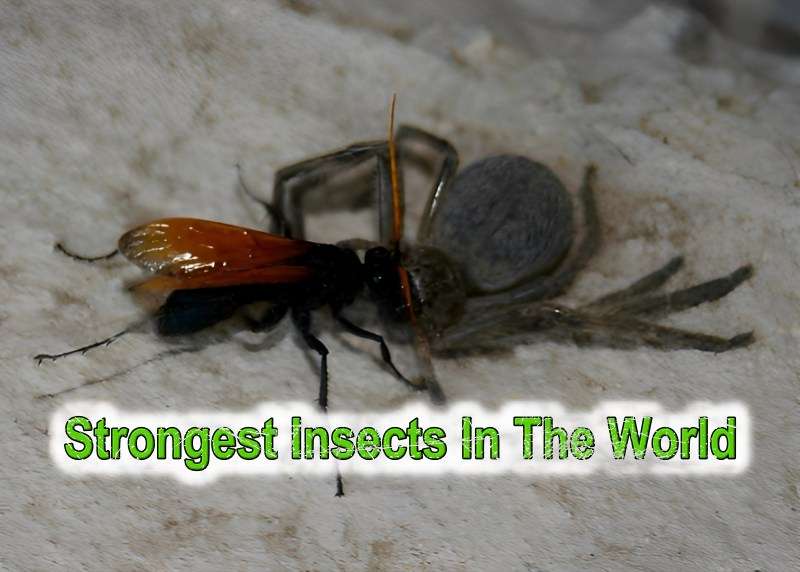Insects are one of the most diverse creatures in the world. With more than millions of species, they bring in multiple features, each characteristic of every species. While some exhibit a show of colors, others excel in durability and strength. In this article, we are going to talk about the Top 30 Strongest Insects in the world (Most Powerful Insects 2023). So, without further delay, let’s get things rolling.
Top 30 Strongest Insects in the World
30) Goliath Stick Insect
Known for its tremendously great ability to produce sway movements that mimic leaves in the wind, and a body resembling a twig. It’s a master of camouflage.
When attacked, they flash their bright red wings and spread their hind legs with a swift motion while emitting a startling “swooshing” sound.
They are not only great at protecting themselves but are also great at protecting their eggs. The eggs have a large, edible fleshy structure called a capitulum that attracts ants. Ants carry these eggs to their nests, protecting and dispersing them.
- Size – Around 10.5 cm- 4 cm
- Scientific Name- Eurycnema goliath
- Location- Endemic to the coasts of Australia
29) Cockroaches
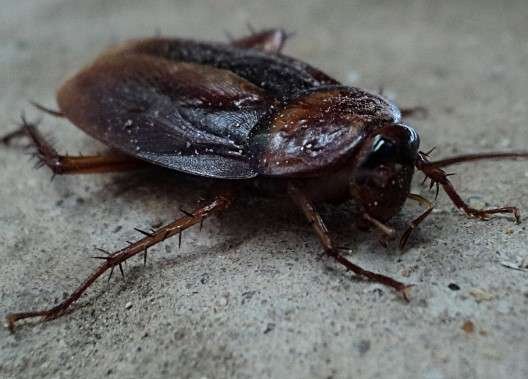
Though not physically strong like the other insects on this list, the Cockroach has been given the 29th position due to its toughness. Cockroaches are one of the world’s most resilient insects.
Some species can not only survive on limited resources like glue behind a stamp but can also stay active without food for a month. They are radiation-resistant and may even evade a nuclear strike.
Their radiation resistance is close to 15 times greater than that of humans. Cockroaches can survive decapitation and can live without its head for as long as seven days.
- Size- Varying (one of the largest cockroach species- Blaberus giganteus)
- Order- Blattodea
- Location- Worldwide, from forests to homes
28) Trap-Jaw Ants
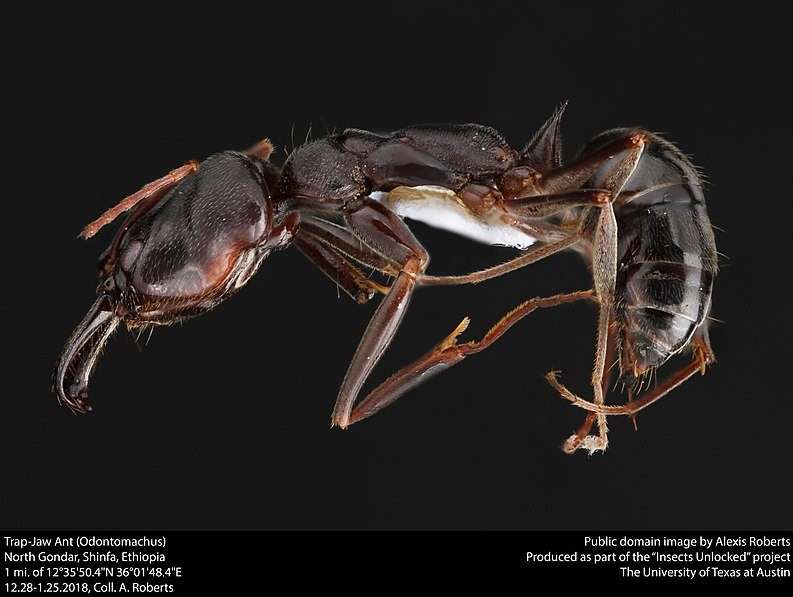
The next insect is the Trap Jaw Ant. Undoubtedly one of the largest genera of ants in the world, the Trap Jaw ants are characterized by their large mandibles.
These jaws are immensely strong and can snap their prey with speeds of 126-230 km/h, the fastest in the entire animal kingdom.
Such strong jaws make these ants one of the most powerful insects in the world. Adults follow an omnivorous diet, while larvae are primarily carnivorous.
- Size- 11-14 millimeters (0.43-0.55 inches)
- Genus- Odontomachus
- Location- Worldwide (tropics and subtropics)
27) African bombardier beetle
The species in the family of Bombardier Beetles are renowned for their unique and highly effective defense mechanism.
When threatened, they eject a chemical spray from their abdomen with a popping sound. This spray is produced through a chemical reaction between hydroquinone and hydrogen peroxide, reaching temperatures close to boiling point.
The Bombardier Beetle’s strength lies in its remarkable chemical defense mechanism.
Most Bombardier Beetle species are carnivorous and nocturnal, including their larval stage.
- Size- Approximately 1.2 to 3.8 centimeters
- Scientific Name – Pheropsophus verticalis
- Location- Present in every continent except Antarctica
26) Tiger Beetle
Tiger beetles are renowned for their lightning-fast hunting abilities. The fastest known species, Rivacindela hudsoni, can sprint at a whooping speed of 9 km/h (5.6 mph).
While some of the tiger beetle genera are day hunters, most of them like Tetracha, Omus, Amblycheila, and Manticora, are nocturnal hunters relying on their sharp instincts and keen vision to hunt under the cover of darkness.
The strength of tiger beetles lies in their exceptional speed and hunting instincts.
- Size – 2 to 3.8 centimeters
- Family– Cicindelidae
- Location- Mostly concentrated in the Indo-Malayan region and the Neotropics
25) Japanese Giant Hornets
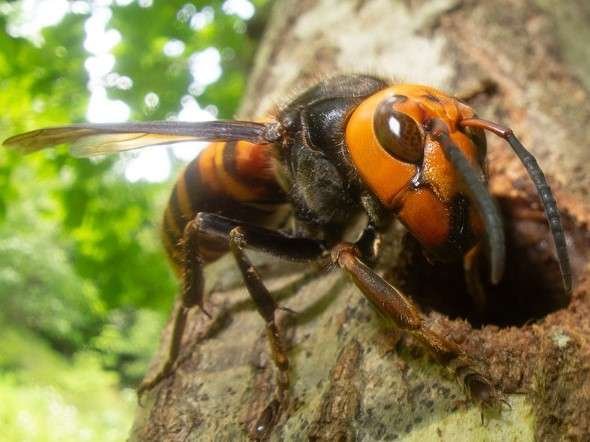
In the 25th position in this list of Strongest Insects in the world, we have the largest hornet species, the Japanese Giant Hornets. Regardless of gender, the hornet has a light orange head and brown antennae with an orange-yellow base. It has dark brown to black eyes and ocelli.
The queens are much bigger than the workers. Workers are approximately 35 and 40 mm, while queens can reach 50 mm (2 in) (1.2-1.6 in). These hornets can deliver an excruciating and potent sting loaded with neurotoxins with a 6 mm stinger.
- Size- 45 millimeters (body length)
- Scientific name- Vespa mandarinia
- Location- East Asia, South, and Southeast Asia
24) Common American Field Ant
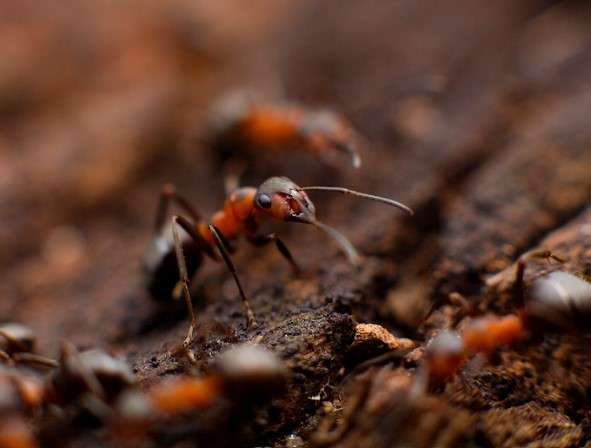
Next up on our list of Strongest Insects in the world, we have the American Field Ants. In fields, parks, gardens, and lawns, these ants frequently construct underground nests.
Depending on the species, coloration can range from pale yellowish to reddish brown to black or a combination of those colors.
The neck joint of a typical American field ant can resist pressures up to 5,000 times the ant’s weight, according to a study published in the Journal of Biomechanics.
- Size- 4-8 millimeter
- Genus- Formica
- Location- Worldwide
23) Bulldog Ant
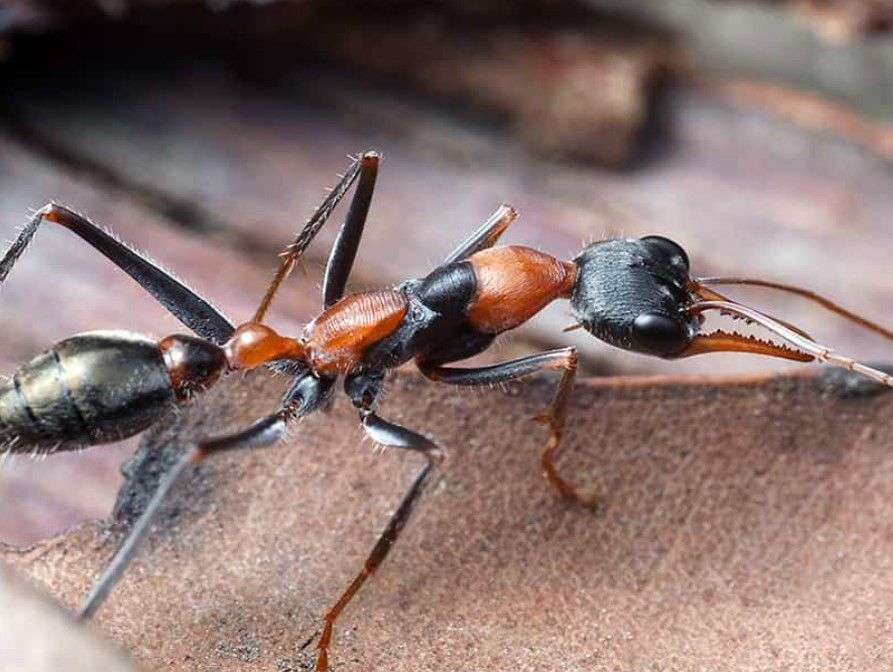
Bulldog ants have enormous mandibles, large compound eyes that give exceptional eyesight, and a strong sting that they utilize to kill prey.
Adults are nectarivores, ingesting nectar, honeydew, and other sweet things. They also hunt other ants and invertebrates.
With a score of 4 on Schmidt’s Pain Index, their poisonous sting is one of the deadliest and most painful ones in the world, making them one of the most powerful insects.
- Size- 8-40 millimeters (0.31-1.57 inches)
- Genus- Myrmecia
- Location- Australia
22) Dobsonfly
- Size– They can have a wingspan of up to 18 cm – 21.6 cm
- Subfamily – Corydalinae
- Location– Distributed across the Americas, Asia, and South Africa.
Despite their long wingspans, they are relatively weak and fluttery fliers, often residing near water bodies.
Adult males of many dobsonfly species possess long, curving mandibles used in competitions for females.
But in an interesting twist of tales, the males cannot use their large mandibles for biting, while females have short, powerful mandibles for defense.
Despite their large wingspan, they are quite flimsy and primarily used for flying. It’s their resilience and ability to adapt to varied environments that make them strong.
21) Leafcutter Ant
The Leafcutter ants are one of the most social and complex insects in the world of insects! They build humongous underground nests housing over 8 million individuals at a time.
These ants engage in a unique symbiotic relationship with fungi.
They cultivate and feed on the fungus as they grow, using freshly cut plant material as the substrate. These ants protect the fungus from pests and even use a bacterium that secretes chemicals to keep it healthy.
Leafcutter ants are known for their exceptional ability to organize and sustain large, well-structured colonies.
- Size – the longest Leafcutter Ant is estimated to be around 17 mm
- Family– Formicidae
- Location – Endemic to South and Central America, Mexico, and certain parts of the southern United States.
20) Tarantula Hawk
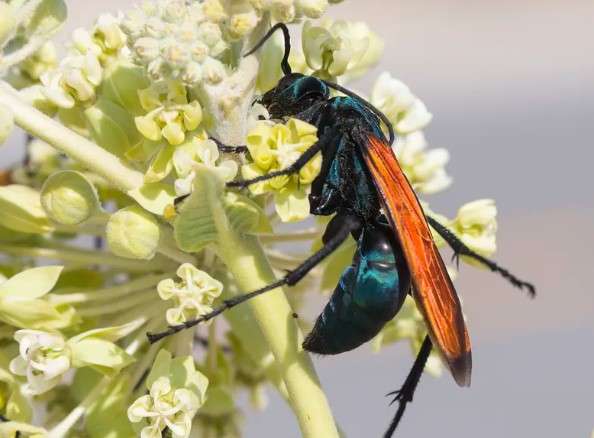
Tarantula Wasps are among the largest wasps and feature brilliant, rust-colored wings with a blue-black body. Their tendency to obliterate tarantulas, which are frequently much larger than themselves, earns them the name.
Females hunt, whereas mature males primarily consume nectar. The female tarantula hawk wasp paralyzes its prey with a sting (one of the deadliest stings in the animal world) between the legs before dragging it to a specially constructed burrow.
- Size- 2 inches (5 centimeters)
- Genus- Pepsis & Hemipepsi
- Location- Worldwide
19) Driver Ant
They are praised for their discipline and impressive marching abilities, sometimes containing up to 50,000,000 ants as they move.
If this astounding number is not mind-boggling enough, these columns can stretch over 20 meters per hour and are a sight to behold.
Just like other ants, Dorylus ants exhibit caste polymorphism, meaning they have different worker castes with specialized roles.
Their remarkable cooperation, discipline, and hunting abilities make them one of the most resilient and strongest insects
- Size– The queen is around 1.5 to 2.4 inches long
- Genus – Dorylus
- Location– Primarily found in central and east Africa, extending their range to southern Africa and tropical Asia.
18) Stinging Beetle
The stinging Beetle is infamously known for being the only beetle with a venomous sting. Their sting is delivered through their antennae which are connected to a venom gland.
It wasn’t until 2005 that the true venomous nature of Onychocerus albitarsis was confirmed.
The effects of Onychocerus albitarsis‘s sting can vary from person to person. While some experience the pain to disappear in an hour or less, for some the pain might persist for more than a week.
- Size – approximately 2 cm long
- Scientific Name – Onychocerus albitarsis
- Location – Rare species of beetle found in the Amazon and Atlantic Forest regions
17) Amazonian Giant Ants
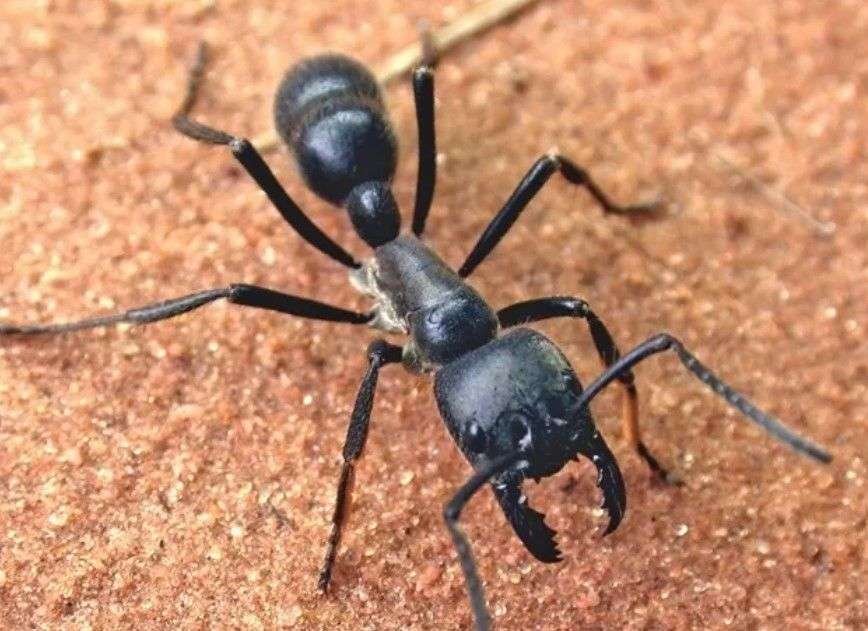
The Giant Amazonian Ants are the largest ant species in the world. The workers typically travel 33 feet away from the nest, and the objects they bring back typically weigh between 10 and 400 milligrams.
This is the best illustration of how ants lift heavy objects. These animals primarily consume fruit, although they feed on spiders, crickets, and snails.
The venom of these insects is among the strongest in the animal kingdom. Its sting may cause excruciating pain that lasts up to eight hours, causing nausea, cold sweats, etc.
- Size- 1.2-1.6 inches
- Scientific name- Dinoponera gigantea
- Location- South American rainforests
16) Praying Mantis
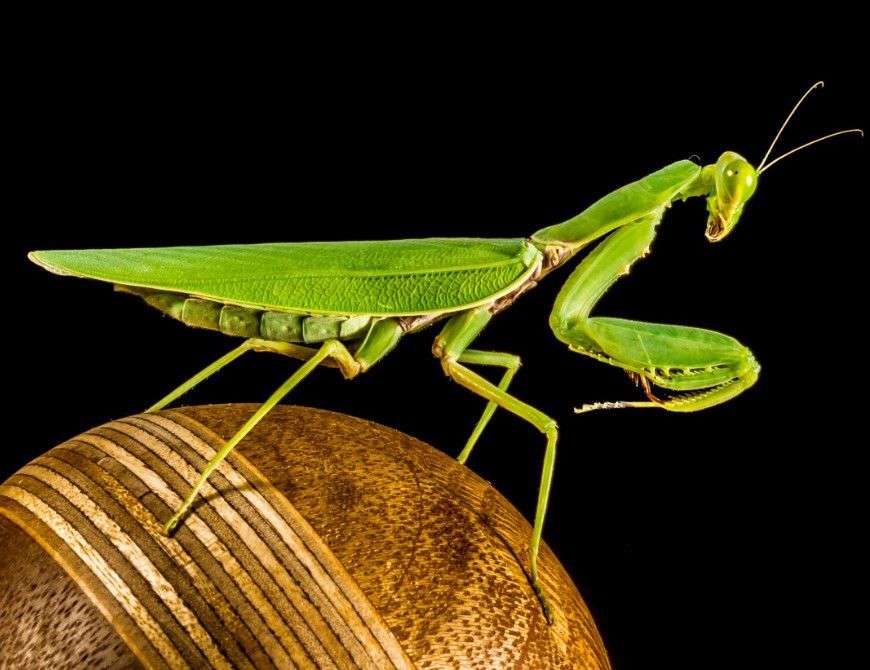
Though they have been divided into nearly 2,400 species across 430 genera, generally, all mantises have common anatomy. Mantises are characterized by their large triangular heads, with bulbous eyes protruding out. They have five eyes, two compounds, and three simple ones.
Mantises are known for their spiked forelegs that consistently stay up in the praying position. They use these forelegs like a trap to hold their prey securely as they slowly nibble their bodies.
- Size- 1-6 inches
- Order- Mantodea
- Location- Temperate and tropical habitats worldwide
15) Sabertooth Longhorn Beetle
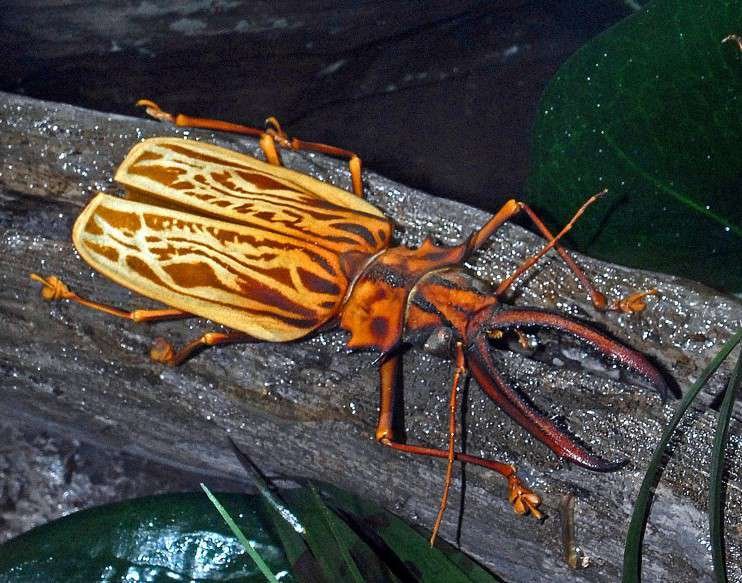
One of the longest insects in the world is the sabertooth longhorn beetle (Macrodontia cervicornis). The larval stage, which can last up to 10 years, is where this species spends most of its time.
Their body is dark and tan, which enhances their ability to blend in with their environment. This species can be recognized by its huge mandibles, which are key characteristics.
With such large jaws and bodies, the Sabertooth beetle is undoubtedly one of the strongest insects in the world.
- Size- 17.5 centimeters (including jaws)
- Scientific name- Macrodontia cervicornis
- Location- South American Rainforests
14) Hornet Robber Fly
The Hornet Robber Fly is no ordinary fly, it is known for being a skilled aerial predator.
Despite its name, the Hornet Robber Fly only bears one small yellow patch on its abdomen, resembling a hornet.
Though not the largest insect the strength of the hornet robber fly lies in its exceptional adaptability as an aerial hunter.
- Size – 25 mm
- Scientific Name – Asilus crabroniformis
- Location – Southern England and South & West Wales
13) Giant Water Bug
Giant Water Bugs are sneaky creatures. They lie motionless at the bottom of bodies of water, waiting for unsuspecting prey to come near before striking with their venomous saliva.
This potent proteolytic saliva liquefies the insides of their victims, allowing the giant water bug to then suck out the nutrients.
Interestingly, males of some of the species in this family as known to carry the eggs on their wings until they hatch.
Giant water bugs are considered a delicacy in some parts of South and Southeast Asia.
Alongside having venomous saliva, they also know how to “play dead” when threatened and emit fluid from their anus, leading to the mistaken belief that they are dead.
- Size – Their size can range from anywhere between 2-12 centimeters
- Family – Belostomatidae
- Location– Found abundantly in the Neotropics, Africa, and the Nearctic region.
12) Elephant beetles
Elephant beetles are recognized by their distinct black coloration and a coat of fine, yellowish microscopic hair that grows throughout their body but even densely on their elytra.
Males of this species have three horns, two on the head and one on the prothorax while the females lack them.
Their growth is a rather exhaustive process, after hatching the larvae go through a lengthy stage, consuming organic matter for around 29 months. The final pupal stage lasts about five weeks before emerging as adults.
While the growth stage lasts for about 2.5 years, the adults live for only 1-3 months
- Size – Usually ranges from 7-13.7 centimeters
- Scientific Name – Megasoma elephas
- Location – Tropical regions of southern Mexico, Central America, and South America
11) Bullet Ant
The bullet ant is infamously known for delivering one of the most painful insect stings known to humans.
On Justin O. Schmidt’s sting pain index, its sting is rated at 4.0+, describing the pain as akin to “walking over flaming charcoal with a three-inch nail embedded in your heel.”
The Sateré-Mawé people of Brazil use bullet ant stings as part of their initiation rituals for warriors and leaders.
Only when in their vulnerable state they are defeated as they often fall victim to parasitic phorid flies (Apocephalus paraponerae) whose larvae feed on injured ants.
- Size – Their sizes range from anything between 18 to 30 mm.
- Scientific Name – Paraponera clavata
- Location– Found largely in the humid lowland rainforests in Central and South America.
10) Goliath Beetle
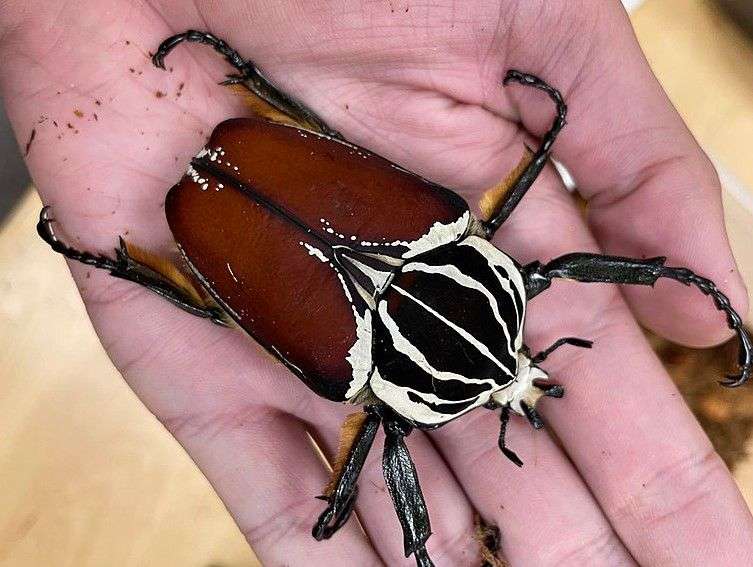
Next up on our list of Strongest Insects in the world we have the Goliath Beetle. If size and weight are taken into consideration, goliath beetles rank among the biggest insects on Earth. They have the potential to attain lengths of up to 9.8 in and weights of more than 100 grams.
The males often attain brown, black, and white colorations, while the females range from chestnut brown to silky white. They mostly eat fruit and tree sap.
- Size- 50–110 millimeters (2.0–4.3 inches)
- Scientific name- Goliathus sp.
- Location- Tropical Forests of Africa
9) Huhu beetle
Known for being the largest and heaviest beetle found in New Zealand.
Every stage of their life cycle is noted and named from the larval stage known as “huhu grub” to the adult stage referred to as the “huhu beetle.”
They also boast powerful mandibles which they use to deliver a painful bite when disturbed or threatened.
The huhu grubs have a long history of being consumed by indigenous people in New Zealand. They are enjoyed for their rich, buttery, chicken- or peanut butter-like taste.
- Size – Around 5 cm
- Scientific Name – Prionoplus reticularis
- Location – New Zealand
8) Blue Death Feigning Beetle
The desert is the home to these reliant and majestic blue death-feigning beetles, known to have evolved to be highly adapted to hot environments.
When faced with a threat, they “feign death,” pretending to be lifeless to escape danger and possible predation.
Their bodies also have a layer of wax that serves as a protective shield, preventing the loss of moisture in the desert environment. Interestingly, the humidity is what darkens their color.
The Blue death-feigning beetle has started to gain popularity in the pet trade for their hardiness, and longevity.
- Size – It grows to decent size of 0.71–0.83 inch
- Scientific Name – Asbolus verrucosus
- Location – Found in the Sonoran and Mojave Deserts
7) Giant Fijian long-horned beetle
The Giant Fijian long-horned beetle is known to be a giant gentle creature with a large body and docile nature.
When threatened, the giant Fijian long-horned beetle produces a loud and fearsome hissing noise by squeezing air from under its elytra.
Unfortunately, they have been constantly facing threats due to human intervention causing deforestation and loss of habitat.
This beetle also plays a vital role in its ecosystem by recycling decaying wood and scavenging the remains of dead plants and trees.
- Size – Grows up to 15 cm
- Scientific Name – Xixuthrus heros
- Location – Lowland rainforests of south-east Viti Levu
6) Rhinoceros Beetle
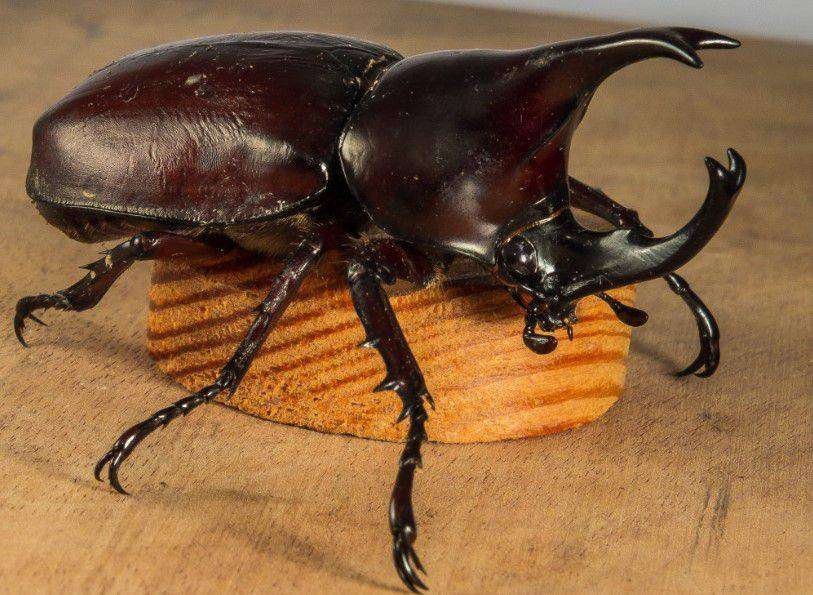
The rhinoceros beetle is another large insect that gets its name from a massive projection on the males’ cheeks that looks like a rhinoceros horn. The world’s strongest animal, the rhinoceros beetle, can lift hundreds of times their weight.
Herbivorous rhinoceros beetles eat plants. Adults use fruit, nectar, and sap as food. Larvae consume decomposing plant debris. Even the Hercules Beetle, which stands at the 2nd position in this list, is also a species of Rhinoceros Beetle.
- Size- 6 inches
- Subfamily- Dynastinae
- Location- Worldwide
5) Titan beetle
Titan beetles have short, curved, and razor-sharp jaws that are so robust that they can snap pencils in half and even cut into human flesh.
While this beetle is found in large numbers, the larval stage of this beetle remains a mystery. Some believe it feeds on tree bark during this stage.
When threatened, adult titan beetles have a unique defense mechanism. They emit a hissing sound as a warning signal, coupled with biting when necessary.
- Size – 15-16.7 centimeters
- Scientific Name – Titanus giganteus
- Location – Rainforests of the Neotropical region, including Venezuela, Colombia, Ecuador, Peru, the Guianas, and north-central Brazil.
4) Diabolical Ironclad Beetle
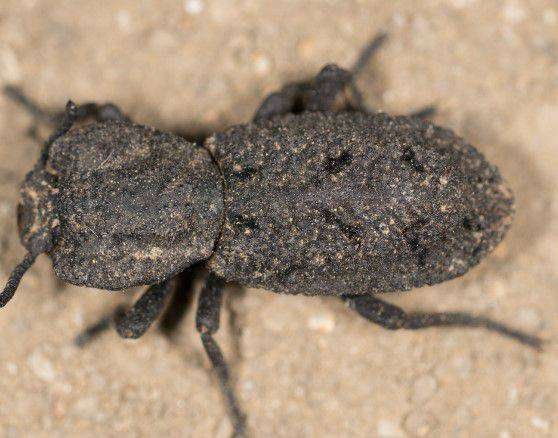
The Diabolical Ironclad Beetle is no less than an armored tank. Now, what makes it so strong? Well, the structure of the exoskeleton makes them extremely durable. This suture has an interlocking pattern that resembles a jigsaw puzzle.
Proteins provide additional reinforcement for these sutures, adding another level of durability. Ironclad beetles can readily withstand being run over by a car with up to 100 N of force.
- Size- 0.6-1 inch
- Scientific name-Nosoderma diabolicum
- Location- Desert areas of Western North America
3) Archegozetes longisetosus
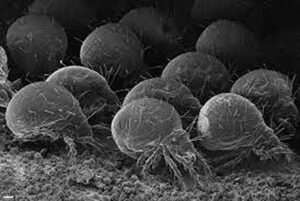
You might wonder why we have placed such a tiny insect against some of the world’s largest insects. Well, let me tell you, this species is immensely strong in proportion to its minuscule size.
Mites can pull 530 times their weight on rough vertical surfaces and can produce holding forces up to 1180 times their weight on uneven horizontal surfaces.
- Size- 1 millimeter
- Scientific name- Archegozetes longisetosus
- Location- Mosses
2) Hercules Beetle
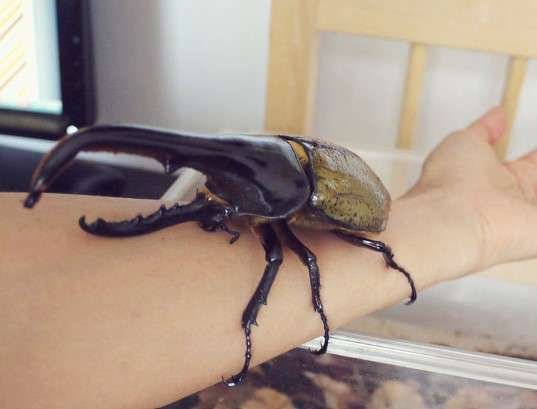
In the second position, we have the largest flying insect in the world, the Hercules Beetle. Deriving its name from the God known for his strength, Hercules, this beetle species can lift 850 times its body weight.
With the horn included, their body size may reach up to 7 in, which makes them the longest beetle species in the world.
A characteristic feature of male Hercules beetles, the horns are primarily used in combat against other males during mating. Adults primarily feed on fruits like apples, grapes, peaches, etc.
- Size- 50-85 millimeters (2- 3.3 inches)
- Scientific name- Dynastes hercules
- Location- South America
1) Horned Dung Beetle
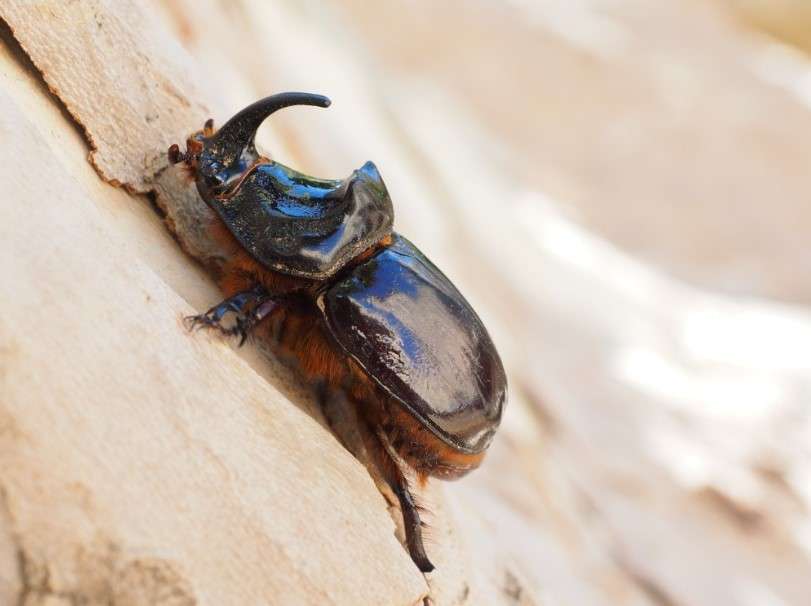
These tiny beetles have an oval form and are typically black or reddish brown. According to the body weight to lift ratio, the Onthophagus taurus is the strongest animal on Earth and can lift 1141 times its weight; and is, therefore, the strongest insect in the world.
Dung beetles play a crucial role in both tropical forests and agriculture. They enhance soil quality and nutrient recycling by burying and eating manure. Horned Dung Beetles help keep pests away and are crucial for the transmission of seeds found in animal manure.
- Size- 5.5-11 millimeters (0.24-0.44 inches)
- Scientific name- Onthophagus taurus
- Location- Central Asia, Australia, Texas (USA)
Frequently Asked Questions
1) What is the king of insects?
The Bee is known as the king of insects.
2) Are dung beetles stronger than ants?
“Yes, dung beetles are stronger than ants in terms of physical strength. Some species of dung beetles are known to pull 1,141 times their body weight.
3) What insect works the hardest?
Among the plethora of insects present in the world, ants are known to be the hardest workers of them all.
4) What is the strongest ant?
The strongest known ant is the Asian weaver ant (Oecophylla smaragdina), also referred to as the green ants or red ants. With its impressive strength and aggression, it is known to fight predators to defend its colonies.
5) Who is queen of insects?
“The “Queen of insects” is a term used to refer to the matriarch of the colony of insects. The queen is responsible for laying eggs and maintaining the colony. So, within a specific social insect colony, the queen is considered the leader and can be seen as the “queen” of that particular insect society.
6) What are the top 5 strongest insect? What is the fastest insect?
The Top 5 strongest insects are : 1) Horned Dung Beetle 2) Hercules Beetle 3) Archegozetes longisetosus 4) Diabolical Ironclad Beetle 5) Titan beetle.
The fastest known insect is the Saharan silver ant (Cataglyphis bombycina), found in the arid lands of Sahara Desert.
7) Who is the strongest animal?
The Dung beetle is often considered the strongest creature in the world. Despite its small size, it is capable of moving objects that are 1,141 times its own body weight.
When strictly considering animals, the Blue Whale is known to be the strongest due to its sheer size and strength.
8) What is the largest insect?
Giant weta (Deinacrida heteracantha) weighing around 71 grams (2.5 ounces), it holds the title of the largest insect based on body mass.
9) Who is the demon god of insects?
Beelzebub occasionally known as the Lord of the Flies is considered the demon god of insects. According to theological sources, mainly Christian, Beelzebub is another name for Satan.
10) Who is the loudest insect?
Shrill thorntree cicada (Brevisana brevis) is known as the loudest insect producing sounds with pressure levels of 106.7 decibels.
11) What is the richest insect in the world?
Stag beetle, is known as the most expensive bug selling for up to $89,000 in some countries.
Here, we come to the end of our article on the Top 30 Strongest Insects in the World (Most Powerful Insects 2023). We will be returning soon with many more write-ups on several niches, so stay tuned until then.
Also Read:

Hi everyone, my name is Shawna, and I’ve always been fascinated by the fascinating diversity of flora and fauna that our nature has in it. I am currently studying biotechnology and am particularly interested in animal biotechnology, delving into the intricate processes that define their true nature and uniqueness.
